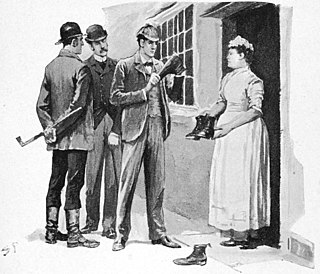
Detective fiction is a subgenre of crime fiction and mystery fiction in which an investigator or a detective—either professional, amateur or retired—investigates a crime, often murder. The detective genre began around the same time as speculative fiction and other genre fiction in the mid-nineteenth century and has remained extremely popular, particularly in novels. Some of the most famous heroes of detective fiction include C. Auguste Dupin, Sherlock Holmes, and Hercule Poirot. Juvenile stories featuring The Hardy Boys, Nancy Drew, and The Boxcar Children have also remained in print for several decades.
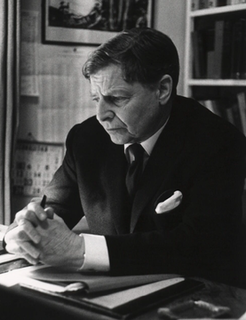
John Innes Mackintosh Stewart was a Scottish novelist and academic. He is equally well known for the works of literary criticism and contemporary novels published under his real name and for the crime fiction published under the pseudonym of Michael Innes.
The Golden Age of Detective Fiction was an era of classic murder mystery novels of similar patterns and styles, predominantly in the 1920s and 1930s.
Roderick Alleyn is a fictional character who first appeared in 1934. He is the policeman hero of the 32 detective novels of Ngaio Marsh. Marsh and her gentleman detective belong firmly in the Golden Age of Detective Fiction, although the last Alleyn novel, Light Thickens, was published in 1982.

Hamlet, Revenge! is a 1937 detective novel by Michael Innes, his second novel. It centres on the investigation into the murder of the Lord Chancellor of England during an amateur production of Shakespeare's Hamlet, in which he plays Polonius, and other crimes which follow at the seat of the Duke of Horton, Scamnum Court.

Fictional detectives are characters in detective fiction. These individuals have long been a staple of detective mystery crime fiction, particularly in detective novels and short stories. Much of early detective fiction was written during the "Golden Age of Detective Fiction" (1920s–1930s). These detectives include amateurs, private investigators and professional policemen. They are often popularized as individual characters rather than parts of the fictional work in which they appear. Stories involving individual detectives are well-suited to dramatic presentation, resulting in many popular theatre, television, and film characters.
Inspector Joseph French is a fictional British detective created by Freeman Wills Crofts. He was one of the prominent detectives of the Golden Age of Detective Fiction, appearing in twenty nine novels and a number of short stories between 1924 and 1957. French is a Scotland Yard detective, whose methodical technique breaks down complex alibis. Over the series he is promoted to Chief Inspector and the later to Superintendent. His manner is courteous, he is a happily married and has no major problems in his private life. The series relied largely on puzzle mysteries.

The Echoing Strangers is a 1952 mystery detective novel by the British writer Gladys Mitchell. It is the twenty fifth entry in her long-running series featuring the psychoanalyst and amateur detective Mrs Bradley.

The Body on the Beam is a 1932 mystery detective novel by Anthony Gilbert, the pen name of British writer Lucy Beatrice Malleson. It is the sixth of ten novels in a series featuring her amateur detective and politician Scott Egerton, a precursor to her better known creation Arthur Crook.
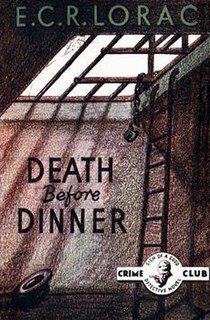
Death Before Dinner is a 1948 detective novel by E.C.R. Lorac, the pen name of the British writer Edith Caroline Rivett. It is the thirtieth in her long-running series featuring Chief Inspector MacDonald of Scotland Yard, one of the detectives of the Golden Age of Detective Fiction who relies on standard police procedure to solve his cases.. It was published in the United States by Doubleday under the alternative title of A Screen for Murder.

The Sixteenth Stair is a 1942 detective novel by E.C.R. Lorac, the pen name of the British writer Edith Caroline Rivett. It is the twenty second in her long-running series featuring Chief Inspector MacDonald of Scotland Yard, a Golden Age detective who relies on standard police procedure to solve his cases.

The Cheyne Mystery is a 1926 mystery thriller novel by Freeman Wills Crofts. It is the second in his series of novels featuring Inspector French, a prominent figure of the Golden Age of Detective Fiction. It followed on from his debut in Inspector French's Greatest Case, in which Crofts introduced a character who was more methodical and less flamboyant than many of the other great detectives who followed in the wake of Sherlock Holmes.
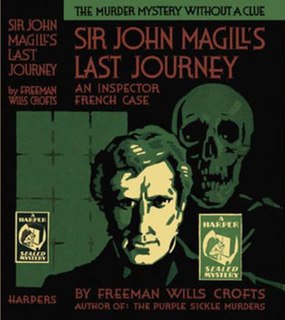
Sir John Magill’s Last Journey is a 1930 detective novel by the Irish writer Freeman Wills Crofts. It is the sixth in his series of novels featuring Inspector French, a prominent figure of the Golden Age of Detective Fiction. Much of the novel takes place in Northern Ireland, particularly around Belfast, where Crofts had spent a great deal of his younger years before moving to England. As with many of his puzzle mysteries its solution revolves around railway timetables as well as the possible distance a boat could cover in a certain time.

Golden Ashes is a 1940 detective novel by the Irish writer Freeman Wills Crofts. It is the twentieth in his series of novels featuring Inspector French, a prominent investigator of the Golden Age of Detective Fiction.
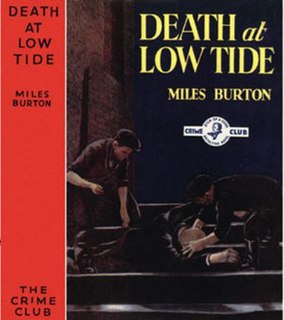
Death at Low Tide is a 1938 detective novel by the British writer Cecil Street, writing under the pen name of Miles Burton. It is the seventeenth in a series of books featuring the Golden Age amateur detective Desmond Merrion and Inspector Arnold of Scotland Yard. A review in the Times Literary Supplement declared "this is probably the best work of an author who has already had many brilliant successes". However The Observer noted "Miles Burton still remains faithful to the Crofts school in his austere refusal to develop a style."
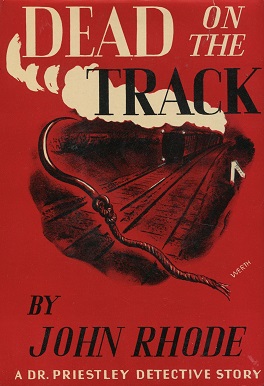
Dead on the Track is a 1943 detective novel by John Rhode, the pen name of the British writer Cecil Street. It is the thirty seventh in his long-running series of novels featuring Lancelot Priestley, a Golden Age armchair detective. Like a number of mystery novels of the era, it has a railway setting. In theme and plot it is very similar to the author's earlier 1931 work Tragedy on the Line. It is the first entry in the series since Hendon's First Case (1935) in which Priestley's old associate Hanslet is the lead investigator. The other recurring police officer in the series Inspector Jimmy Waghorn is now working with military intelligence.

Appleby's End is a 1945 detective novel by the British writer Michael Innes. It is the tenth in his series featuring John Appleby, a young Detective Inspector in the Metropolitan Police. The plot has some similarities to a country house mystery taking part in rural England, but as with much of the author's work this is mixed with a complex plot and a variety of farcical incidents and characters. As is common for novels in the genre, no mention is made of the ongoing Second World War. Taking place over little more than twenty four hours, it ends with Appleby engaged to be married and planning to retire from the police force.
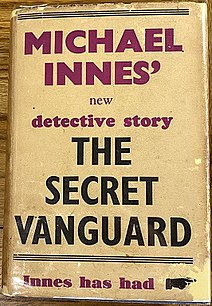
The Secret Vanguard is a 1940 thriller novel by the British writer Michael Innes. It is the fifth in his series featuring John Appleby, a young Detective Inspector in the Metropolitan Police. The novel takes place in the early stages of the Second World War, and functions closer to a mystery spy novel than the traditional detective novel.
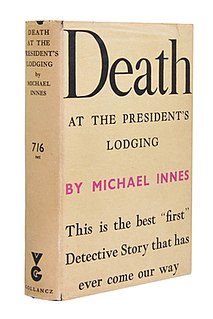
Death at the President's Lodging is a 1936 detective novel by the British writer Michael Innes. It was the first in a series of novels featuring John Appleby, a Detective Inspector in the Metropolitan Police. It is a traditional closed circle of suspects mystery, taking place in a fictitious Oxbridge college located in Bletchley about halfway between Cambridge and Oxford on the Varsity Line. It was released in the United States by Dodd, Mead under the alternative title Seven Suspects.
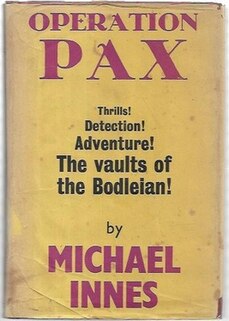
Operation Pax is a 1951 mystery thriller novel by the British writer Michael Innes. It is the twelfth entry in his series featuring John Appleby, a detective in the Metropolitan Police. The novel is thematically a thriller rather than the traditional Golden Age of Detective Fiction murder investigation that features in most of the series. As with other books in the series a farcical tone is often maintained. It was released in the United States under the alternative title The Paper Thunderbolt.

















